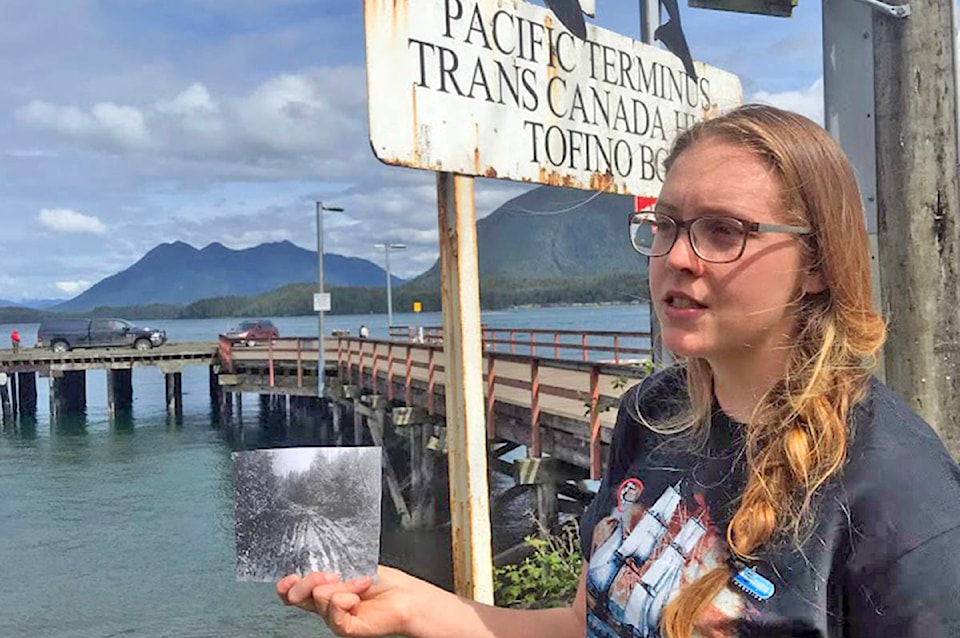Laurissa Cebryk
Special to the Westerly
Through the eyes, ears and memories of Johnny Yoshio Madokoro, Tofino is transformed into the 20th century, where nearly one third of the Clayoquot population was made up of Japanese Immigrants.
The Tofino Clayoquot Heritage Museum’s Japanese Heritage Walking Tour takes you slogging through mud one mile every day to get to Japanese school, now the Tofino Motel. It wakes you up at 3 a.m. to climb aboard Japanese trollers, fishing for Coho with gear like hoochies and ‘shiny wobblers.’ You attend the first Japanese-Canadian wedding in Tofino between Johnny Yoshio and Mary Miki Kimoto at the St. Columba Anglican Church, where the view is reverted to the 20th century sweeping vista of Meares Island.
From the First Street Dock, where Japanese families used to come to land from Stubbs Island in the 1920’s, to the 1940’s where at that same dock, families were taken away and sent to internment, you experience life as a Japanese immigrant on the West Coast.
Few recognize the impact of Tofino and Ucluelet’s Japanese residents, or how their culture and history has shaped the coast today. That is the goal of Sakura, the title for this year’s Cultural Heritage Festival. Sue Payne of the Pacific Rim Arts Society hopes that visitors and locals alike will come to appreciate the unique Japanese cultural aspects that influence the coast and how they are deeply intertwined with the Indigenous roots of the area. Even today, the remaining Japanese families who returned after internment have ties with the First Nations, which will be demonstrated throughout the festival.
On the tour, you experience those inseparable ties firsthand. That first winter, the Opitsat people ensured that the Japanese families made it through as they struggled with the endless rains and fog inherent to the West Coast. What are commonly known today as spoons, were a Japanese fishing innovation from Ometaro Morishita inspired by Nuu-Chah-Nulth fishermen using kitchen spoons. With their fleets of boats, the harbour changed from a scene of dugout canoes and purse seiners to Japanese gillnetters and trollers, still prevalent today. Both Japanese and Indigenous island residents and fishermen influenced the layout of Tofino, with the water taking priority as the highway.
First Street resides closest to Stubbs Island, the beginning of the waterway, and Main Street at the end where the boats came in from sea. Down at the First Street Dock, as photos of the Princess Maquinna, a 1900s passenger steamship, are passed around, you are transported to 1942 into a state of paranoia due to Pearl Harbor.
The same boat took away the Japanese families that finally felt at home. Over 22,000 people were relocated. Families were torn apart with some sent to internment camps, while able-bodied workers spent time as far as Ontario at sugar beet farms.
The impact and heritage of this era of Clayoquot lives on through the few remaining members of the first Japanese families, stories, tours, trollers, hoochies and “shiny wobblers.”
Tours are by donation and will be running May 25 and 26, departing at 10 a.m. from the Tofino Clayoquot Heritage Museum.
READ MORE: Tofino council plans apology for 1947 motion to ‘exclude Orientals’
READ MORE: Investigation into the impacts of Japanese internment
READ MORE: Seizure of Japanese-Canadian boats resonates today, maritime museum says
